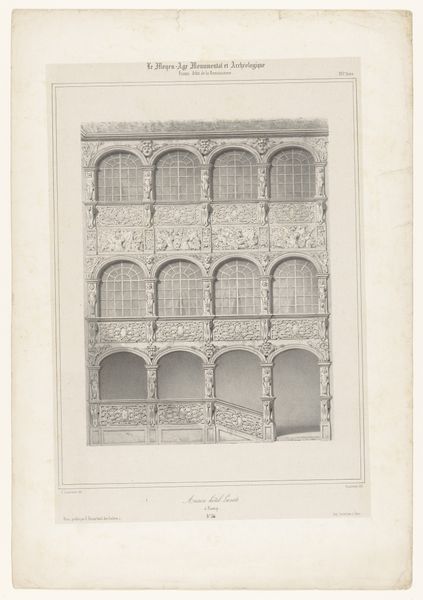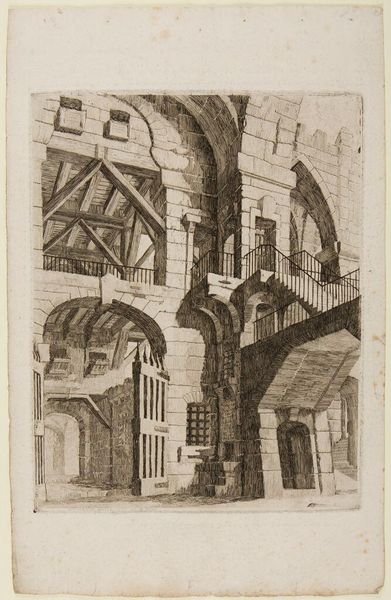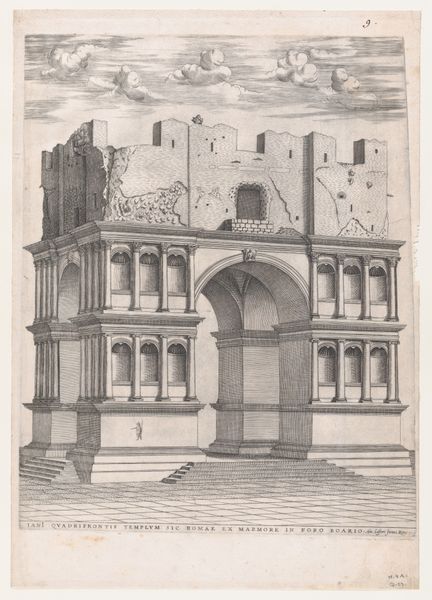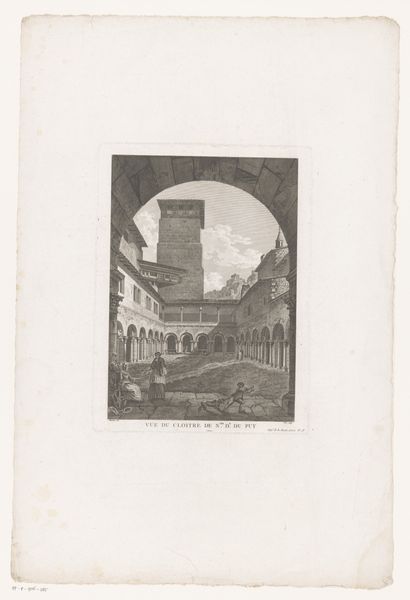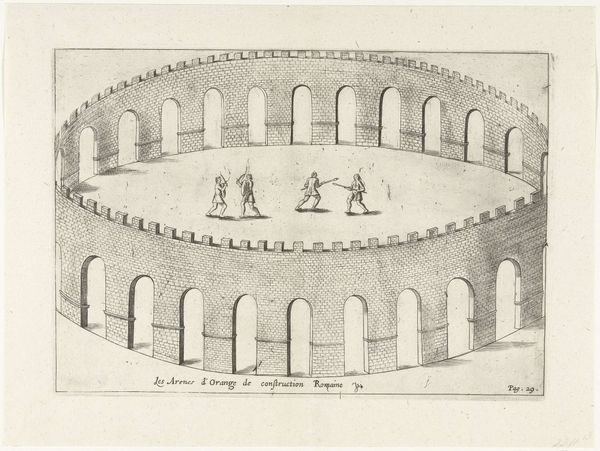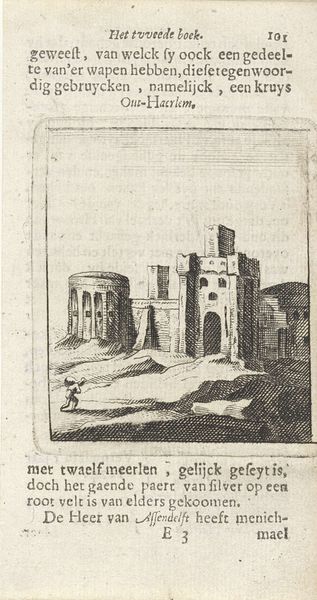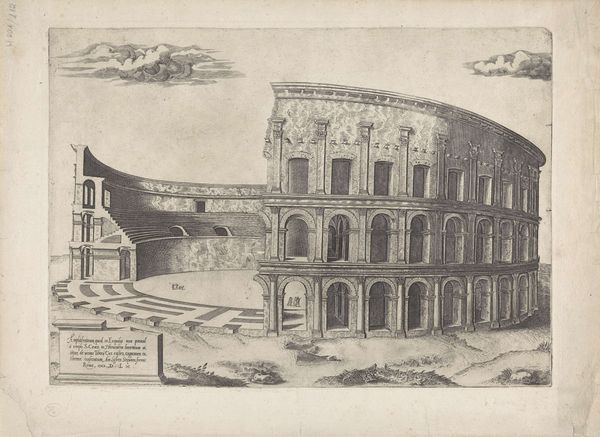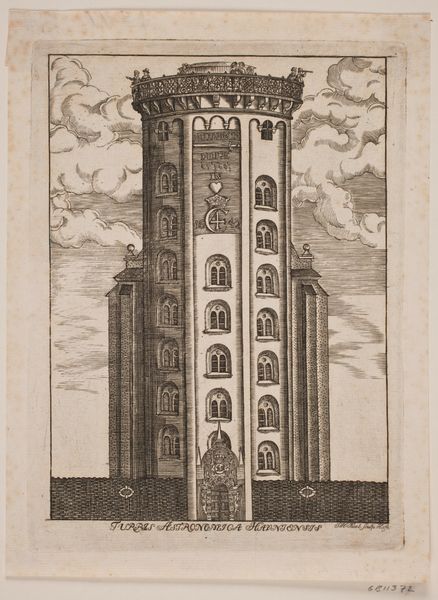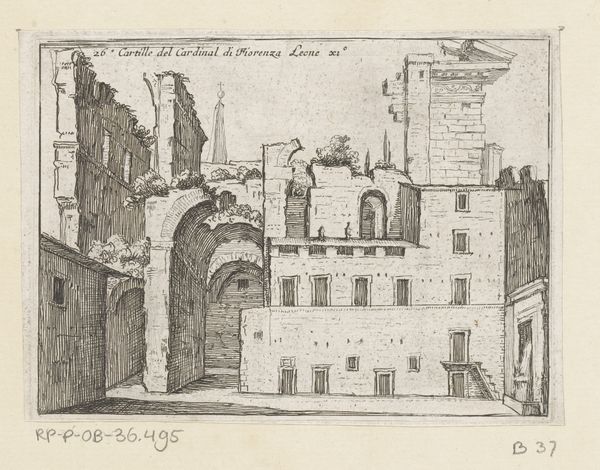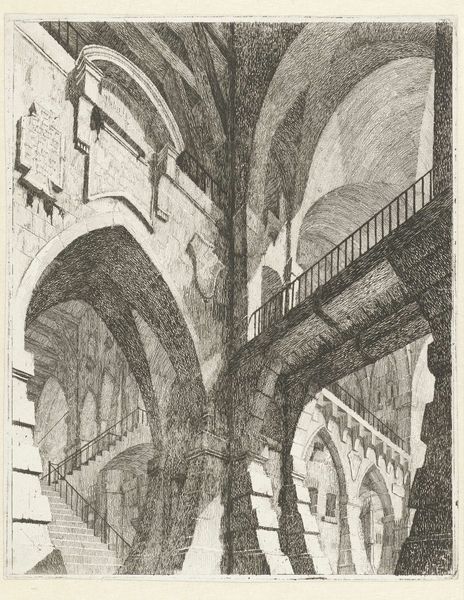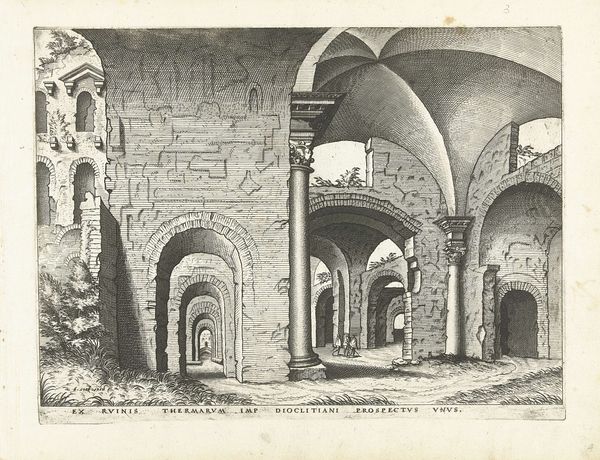
print, engraving, architecture
#
baroque
# print
#
line
#
cityscape
#
history-painting
#
engraving
#
architecture
Dimensions: height 256 mm, width 191 mm
Copyright: Rijks Museum: Open Domain
Curator: Here we have J. Baugin's engraving, "The round tower of the Roman bathhouse in Orange, 1639," dating roughly from 1637 to 1640. It presents a remarkably detailed depiction of Roman architecture. Editor: The sheer, painstaking labor involved in creating such a precise rendering is evident, isn't it? All those individual lines etched to illustrate the brickwork...you can almost feel the weight and density of the stone. Curator: Precisely. The engraving’s focus directs us to how antiquarianism shaped architectural representation and its link with socio-political narratives. In that period, accurate depictions of classical structures underscored political legitimacy and continuity with the Roman Empire, especially for patrons and audiences keen on self-aggrandizement. Editor: The use of printmaking also democratizes this image, spreading ideas about architectural grandeur far beyond a single elite patron. And this is a form made possible by certain materials. The paper itself – its quality and availability – plays a significant role. The lines have an appealingly mechanical character. The labor is right there in plain view. Curator: Indeed. Consider, too, that while it presents itself as a purely objective record, it’s mediated through Baugin’s artistic choices, revealing a controlled viewpoint reflecting prevailing classicizing tastes and its intended reception in Baroque scholarly circles. Editor: Looking at it from the ground up, one sees both monumentality and function, particularly through the archways and shadowed spaces within. Was this perhaps designed for circulation, where different social classes commingled? What controlled the movement through the arches? Curator: Interesting point. It is unlikely a truly objective viewpoint as there were no inhabitants in this building when the rendering was done. This wasn't intended to portray an active bathing space. Its goal was likely to simply present historical precedence, visually connecting patrons with notions of classical imperial strength and order, rather than showing practical aspects. Editor: Well, whatever its intended function or use as propaganda, it's fascinating to consider all the materials used in the architecture itself. And how these humble printed lines invite us to feel, examine, and, through our own labor of looking, almost rebuild the tower from the ground up. Curator: Absolutely, appreciating how this print was deployed is fundamental for understanding its importance in art and society. Editor: A vital piece, indeed, illustrating how closely labor, class, architecture, and socio-historical values truly interweave.
Comments
No comments
Be the first to comment and join the conversation on the ultimate creative platform.
